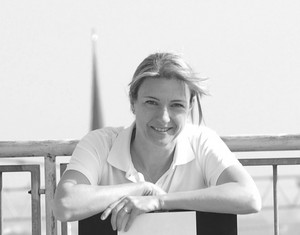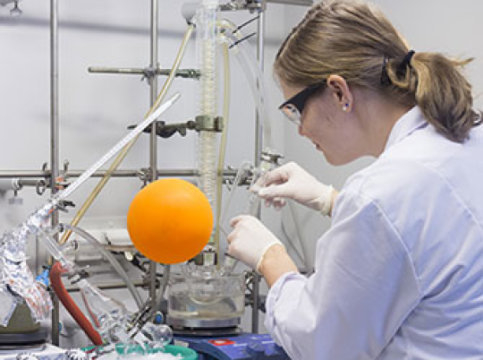Arteriosclerotic vascular disorders are one of the most common causes of death in industrialized countries. Blockage of blood vessels can quickly become dangerous, and in these situations a bypass operation to replace a clogged blood vessel either with another vessel taken from elsewhere in the patient’s the body, or even by an artificial vascular prostheses, is often the only solution.
Now, scientists at Vienna University of Technology and Vienna Medical University in Vienna, Austria, have developed artificial blood vessels made from a special elastomer material with excellent mechanical properties. The developers explain that with passage of time, these artificial blood vessels will be replaced by endogenous material, and at the end of this restorative process, a natural, fully functional vessel will once again be in place.
This innovative method has already proved successful in experiments using rats. “The rats’ blood vessels were examined six months after insertion of the vascular prosthes es,” says Dr. Helga Bergmeister of MedUni Vienna. “We did not find any aneurysms, thromboses or inflammation. Endogenous cells had colonized the vascular prostheses and turned the artificial constructs into natural body tissue.” In fact, natural body tissue re-grew much faster than expected so that the degradation period of the plastic tubes can be even shorter. Further adaptations are currently being made to the material.”
es,” says Dr. Helga Bergmeister of MedUni Vienna. “We did not find any aneurysms, thromboses or inflammation. Endogenous cells had colonized the vascular prostheses and turned the artificial constructs into natural body tissue.” In fact, natural body tissue re-grew much faster than expected so that the degradation period of the plastic tubes can be even shorter. Further adaptations are currently being made to the material.”
Dr. Burmeister is lead author of a study recently published in the journal Acta Biomaterialia, entitled: “Biodegradable, thermoplastic polyurethane grafts for small diameter vascular replacements“ (Acta Biomaterialia 11 (2015) http://dx.doi.org/10.1016/j.actbio.2014.09.003), coauthored by Dr. Bermeister, Nargiz Seyidova, Catharina Schreiber, Magdalena Strobl, Christian Grasl, Ingrid Walter, Barbara Messner, Stefan Baudis, Sophie Froehlich, Martina Marchetti-Deschmann, Markus Griesser, Matt di Franco, Martin Krssak, Robert Liska, and Heinrich Schima, representing various departments at the Medical University of Vienna, the University of Veterinary Medicine,at Vienna, and the Vienna University of Technology.
The coauthors report that biodegradable vascular grafts with sufficient in vivo performance would obviously be more advantageous and desirable than permanent non-degradable prostheses. The biodegradable constructs would be continuously replaced by host tissue, leading to an endogenous functional implant that would adapt to needs of the particular patient while presenting only limited risk of microbiological graft contamination.
They note that adequate biomechanical strength and a wall structure designed to promote rapid host remodeling are prerequisites for biodegradable implant approaches. Moreover, they observe that current approaches often have limited tensile strength and consequently require thicker graft walls or reinforcement.
The investigators report that in their study they investigated both in vitro and in vivo biocompatibility of thin host-vessel-matched grafts (n = 34) formed from hard-block biodegradable thermoplastic polyurethane (TPU). Expanded polytetrafluoroethylene (ePTFE) conduits (n = 34) served as control grafts. The grafts were analyzed using a variety of techniques after retrieval at different time points (1 week; 1, 6, 12 months).
They found that TPU grafts showed significantly increased endothelial cell proliferation in vitro (P < 0.001), and population by host cells increased significantly in the TPU conduits within 1 month of implantation (P = 0.01). After long-term implantation, TPU implants showed 100% patency (ePTFE: 93%) with no signs of aneurysmal dilatation. Substantial remodeling of the degradable grafts was observed, but varied among subjects. Intimal hyperplasia was limited to ePTFE conduits (29%).
The researchers conclude that thin-walled TPU grafts offer a new and desirable form of biodegradable vascular implant, reporting that their degradable grafts showed equivalent long-term performance characteristics compared to the clinically used, non-degradable material with improvements in intimal hyperplasia and in host cell growth.
A TUW release notes that the most important thing in bypass surgery is to find a suitable material for the graft, and the artificial materials that have been used so far are not ideally compatible with body tissue. The replacement blood vessel can also easily become blocked, especially if it is only small in diameter. To address this ma terial deficiency, TUW scientists have developed new polymers. “These are so-called thermoplastic polyurethanes,” explains Robert Liska from the Institute of Applied Synthetic Chemistry of Vienna University of Technology and one of the Acta Biomaterialia paper’s coauthors. “By selecting very specific molecular building blocks we have succeeded in synthesizing a polymer with the desired properties.”
terial deficiency, TUW scientists have developed new polymers. “These are so-called thermoplastic polyurethanes,” explains Robert Liska from the Institute of Applied Synthetic Chemistry of Vienna University of Technology and one of the Acta Biomaterialia paper’s coauthors. “By selecting very specific molecular building blocks we have succeeded in synthesizing a polymer with the desired properties.”
Thin Polymer Thread Spun Into Tubes
To produce the vascular prostheses, polymer solutions were spun in an electrical field to form very fine threads and wound onto a spool. “The  wall of these artificial blood vessels is very similar to that of natural ones,” says Heinrich Schima, another of the Acta Biomaterialia paper coauthors. Dr. Schima is an Associate Professor of Biomedical Engineering, Fellow of EAMBES and AIMBE, and head of the Working Group on Cardiovascular Dynamics and Artificial, Organs, and Coordinator of the Plastics Laboratory in the Center of Biomed Engineering and Physics (in conjunction with the Ludwig Boltzmann Cluster for Cardiovascular Research) of the Medical University of Vienna. “The polymer fabric is slightly porous and so, initially, allows a small amount of blood to permeate through and this enriches the wall with growth factors. This encourages the migration of endogenous cells.”
wall of these artificial blood vessels is very similar to that of natural ones,” says Heinrich Schima, another of the Acta Biomaterialia paper coauthors. Dr. Schima is an Associate Professor of Biomedical Engineering, Fellow of EAMBES and AIMBE, and head of the Working Group on Cardiovascular Dynamics and Artificial, Organs, and Coordinator of the Plastics Laboratory in the Center of Biomed Engineering and Physics (in conjunction with the Ludwig Boltzmann Cluster for Cardiovascular Research) of the Medical University of Vienna. “The polymer fabric is slightly porous and so, initially, allows a small amount of blood to permeate through and this enriches the wall with growth factors. This encourages the migration of endogenous cells.”
 The interaction between material and blood was studied by paper coauthor Martina Marchetti-Deschmann at TU Wien using spatially resolved mass spectrometry.” Dr. Marchetti-Deschmann is an Associate Professor at the VUT whose scientific work focuses on “Omic” techniques like Proteomics, Glycomics, Metabolomics, Lipidomics; Mass Spectrometry Imaging; Mass Spectrometry and Hyphenated Separation Techniques;.Structure Elucidation of Bioactive Compounds in Biological Samples, and High and Low Energy Collision Induced Dissociation.
The interaction between material and blood was studied by paper coauthor Martina Marchetti-Deschmann at TU Wien using spatially resolved mass spectrometry.” Dr. Marchetti-Deschmann is an Associate Professor at the VUT whose scientific work focuses on “Omic” techniques like Proteomics, Glycomics, Metabolomics, Lipidomics; Mass Spectrometry Imaging; Mass Spectrometry and Hyphenated Separation Techniques;.Structure Elucidation of Bioactive Compounds in Biological Samples, and High and Low Energy Collision Induced Dissociation.
The research project was recently awarded PRIZE prototype funding from Austria Wirtschaftsservice (AWS). More preclinical trials will be necessary before the artificial blood vessels can be used in humans. However, based on the results so far, the research team say they are confident that the new method will be approved for use in humans in a few years hence.
Sources:
Vienna University of Technology
Vienna Medical University
Acta Biomaterialia
Image Credits:
Vienna University of Technology
Vienna Medical University


